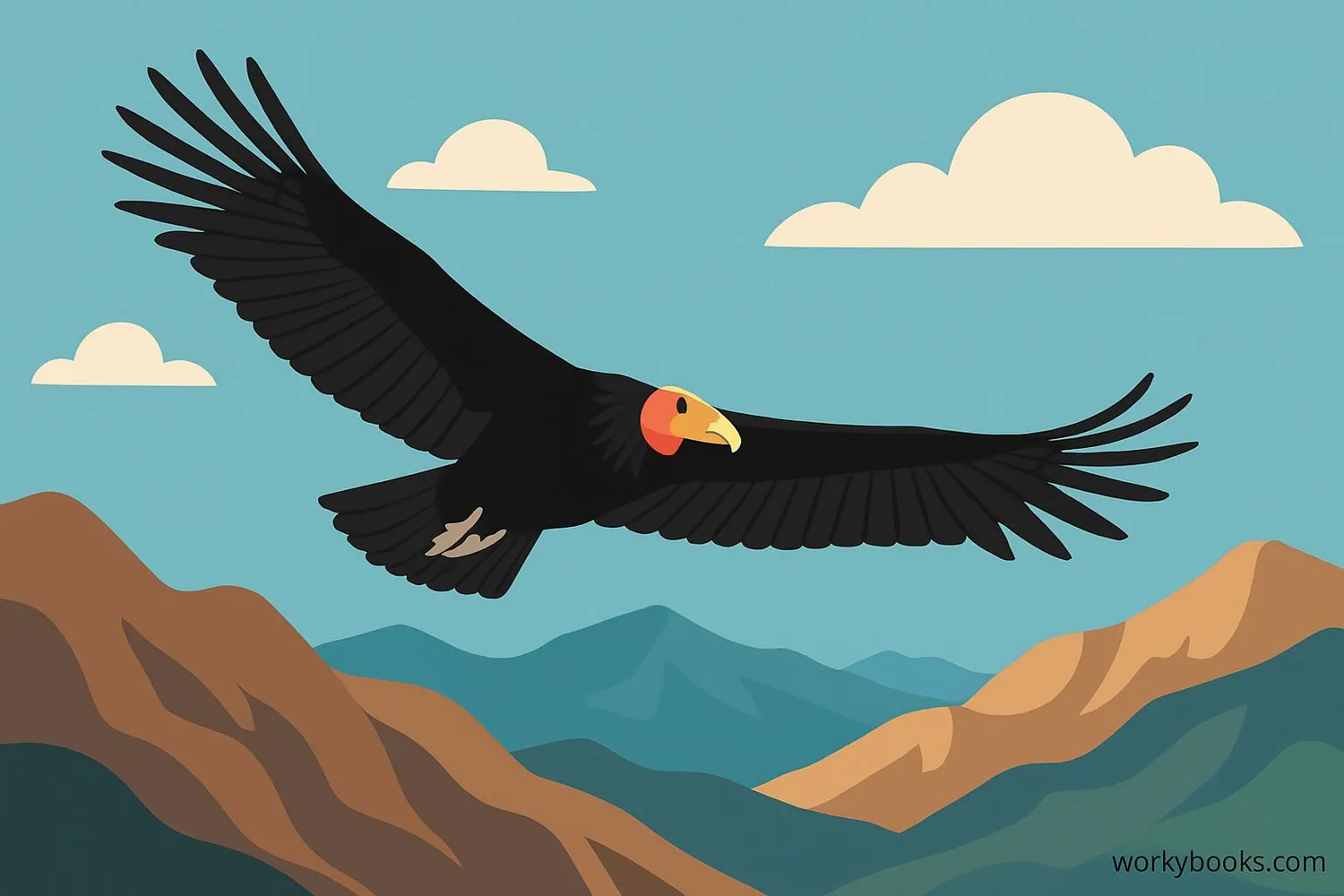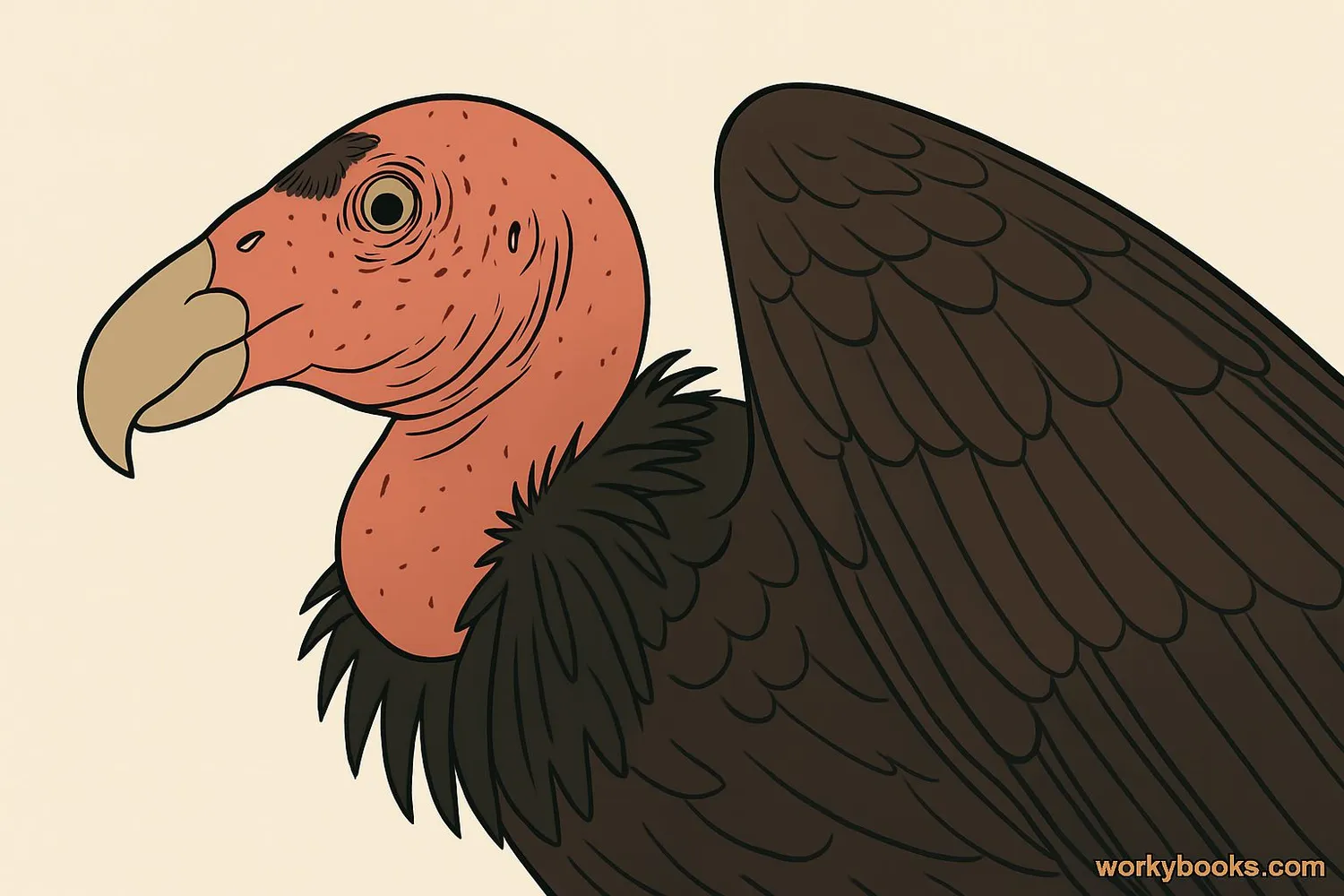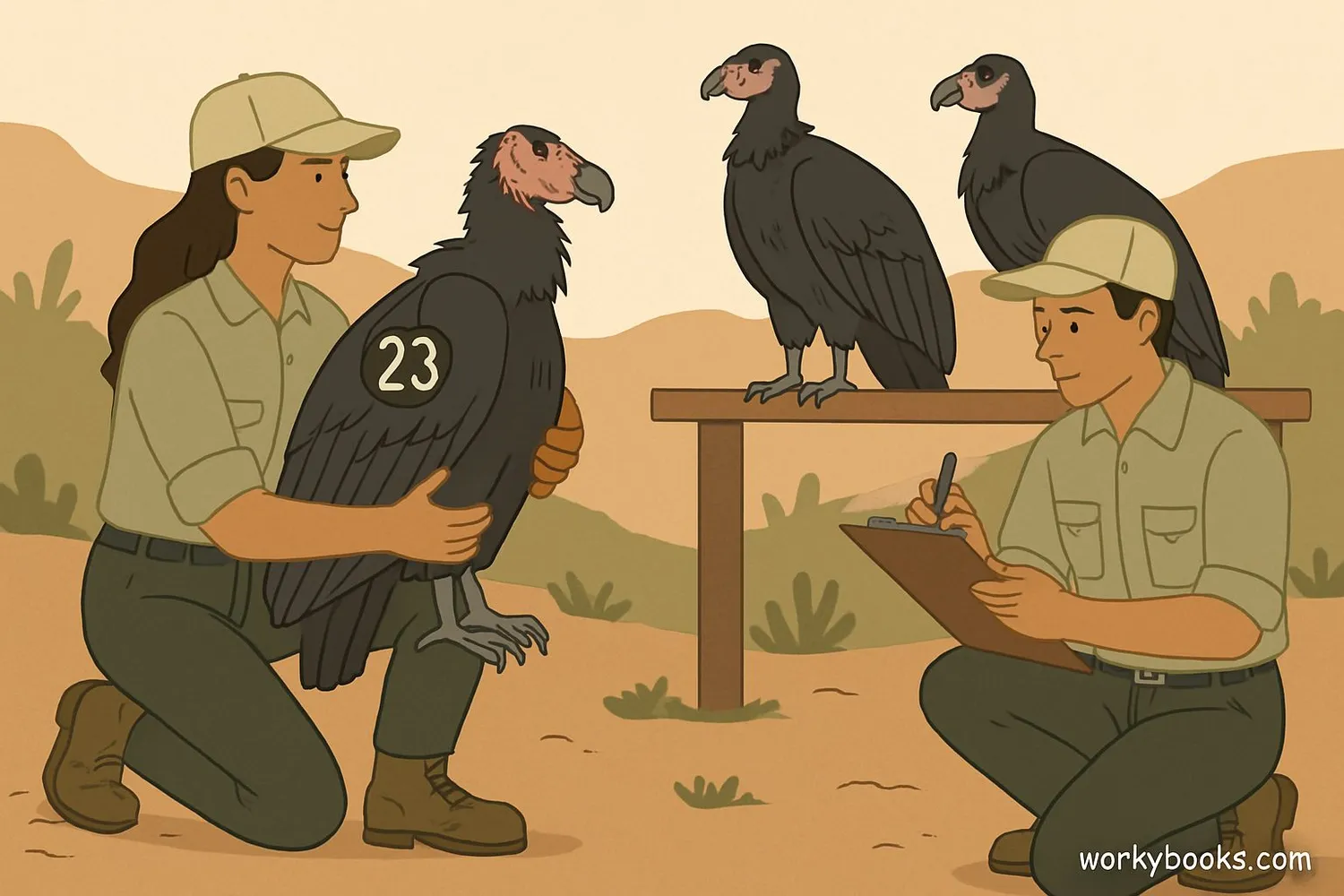California Condor - Definition, Examples, Quiz, FAQ, Trivia
North America's Largest Bird and Conservation Success Story
What is a California Condor?

The California Condor is a magnificent bird and the largest flying bird in North America. With wings that can stretch over 9 feet wide, they soar high in the sky searching for food. These amazing birds are scavengers, which means they eat dead animals they find rather than hunting live prey.
Condors play an important role in nature by cleaning up dead animals, which helps prevent the spread of diseases. They can fly up to 15,000 feet high and travel 150 miles in a single day looking for food!
Did You Know?
California Condors can live up to 60 years in the wild, making them one of the world's longest-living birds!
Physical Characteristics

California Condors are truly impressive birds with unique features:
Size
Up to 4.5 feet tall with 9.5-foot wingspan
Appearance
Black feathers with white underwing patches
Head
Bald head that changes color with mood
Weight
Up to 25 pounds - as heavy as a small dog!
Flight
Can soar for hours without flapping wings
Condors have excellent eyesight that helps them spot food from high in the air. Their bald heads might look unusual, but they're perfectly adapted for their scavenging lifestyle. After eating, their heads stay clean because there are no feathers for food to stick to!
Habitat
California Condors live in rocky, forested regions including mountains, gorges, and canyons. They nest in caves or rock crevices high above the ground.
Conservation Success Story

The California Condor is one of the world's greatest conservation success stories. By 1987, only 27 condors remained in the wild, making them critically endangered. Scientists made the difficult decision to capture all remaining wild condors to start a captive breeding program.
Through dedicated efforts, condors began to be reintroduced to the wild in 1992. Today, there are over 500 California Condors, with more than half living in the wild!
Conservation Timeline
Critical Point
Last 27 wild condors captured for captive breeding program
First Release
First captive-bred condors released back into the wild
Wild Nesting
First wild-born chick fledges since reintroduction
Population Growth
Over 500 condors with more than 300 in the wild
Ongoing Challenges
Condors still face threats from lead poisoning (from eating animals shot with lead bullets), microtrash ingestion, and habitat loss. Continued conservation efforts are essential for their survival.
California Condor Quiz
Test your knowledge about these amazing birds with our quiz!
Frequently Asked Questions
Here are answers to common questions about California Condors:
Fun Condor Trivia
Discover some amazing facts about these magnificent birds!
Soaring Specialists
California Condors can soar for hours without flapping their wings! They use thermal air currents to gain altitude, sometimes reaching heights of 15,000 feet - higher than many small airplanes fly!
Giant Birds
With a wingspan up to 9.5 feet, California Condors are the largest flying land birds in North America. When they spread their wings, they're wider than a professional basketball player is tall!
Ancient Flyers
California Condors are living fossils! Their ancestors flew over North America during the Pleistocene epoch, about 40,000 years ago, when they soared above mammoths and saber-toothed cats.
Remarkable Recovery
From just 27 individuals in 1987 to over 500 today, the California Condor recovery is one of conservation's greatest success stories. Each condor is precious to the species' survival.


